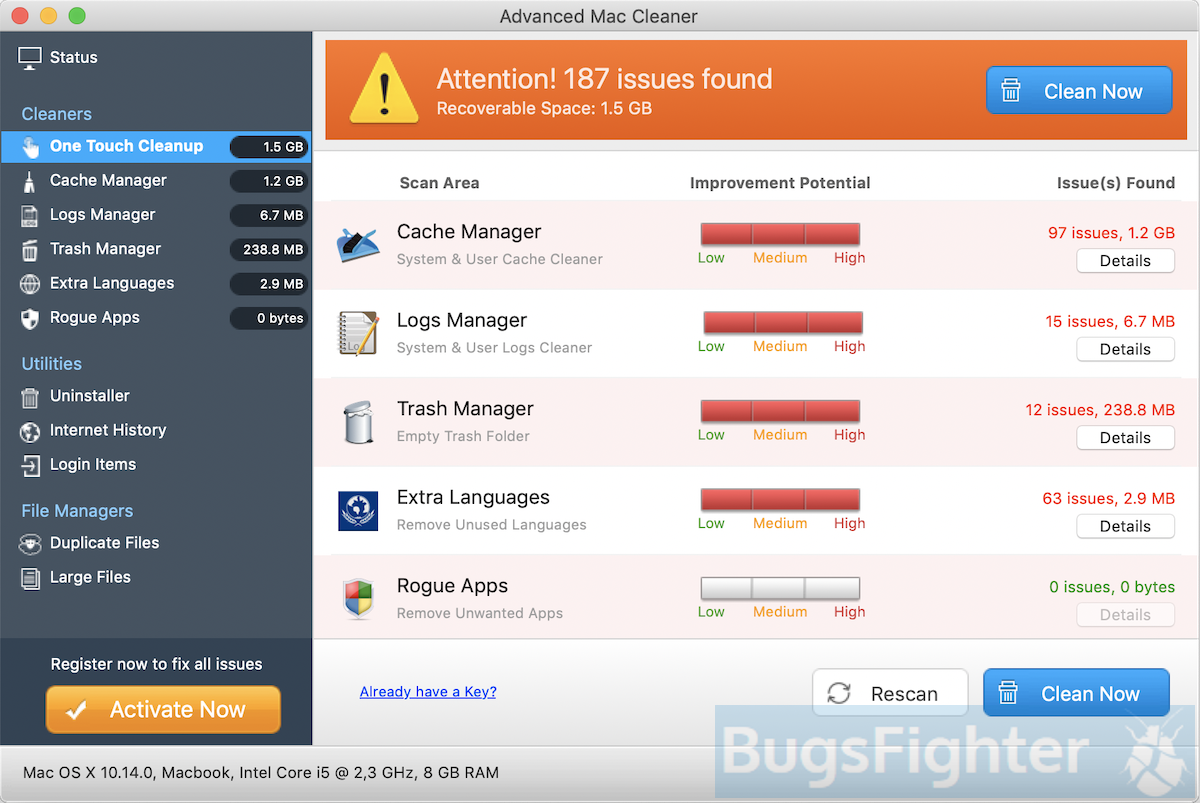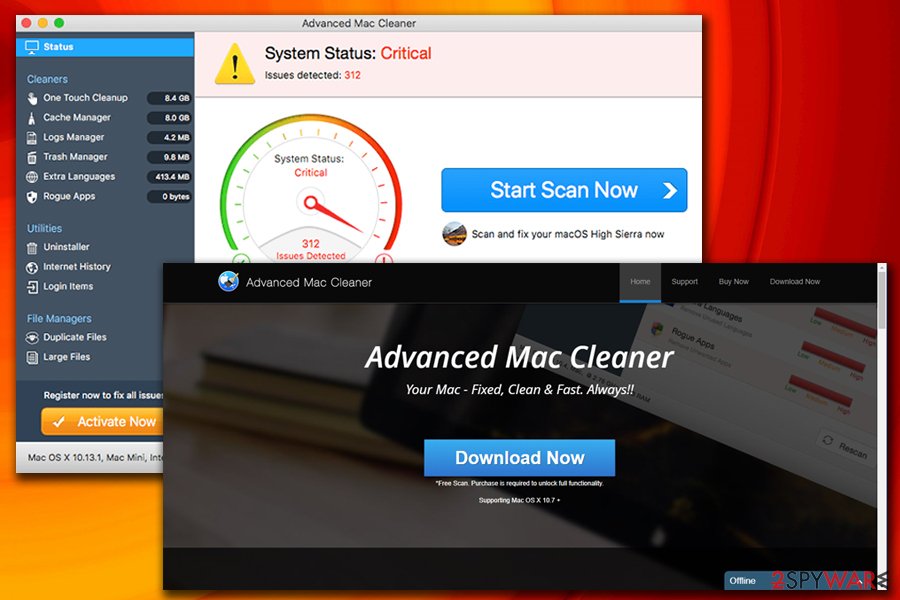

- Removing advanced mac cleaner install#
- Removing advanced mac cleaner upgrade#
- Removing advanced mac cleaner software#
- Removing advanced mac cleaner Pc#
Also, note that a couple of those reviews above are over two years old so their "pros" and "cons" don't accurately reflect all of today's MWB features. (It isn't.) Nonetheless, go do your own homework, explore, and read reviews:Īnd if you don't know those sites, go find reviews elsewhere on sites you trust. You should question whether MWB is another scam itself. I guess business models change over time, as do the cleverness of the bad guys. I found that disappointing, because for $20 a few years ago I got a lifetime license for the Windows version.
Removing advanced mac cleaner upgrade#
And, yes, there's the option to upgrade to an annual $25 license. In the free Mac version of MWB there are some features which cease working after 14 days.

Removing advanced mac cleaner Pc#
I regularly run it as part of a "suite" of tools to keep my virtual PC clean and safe:

I've owned it since January 2013 but did not know until today they made a Mac version - maybe because until today I didn't need the Mac version. I use MWB on the Windows side of my Mac (via Parallels). Then I downloaded and ran the free Mac version of "MalwareBytes" (MWB) which successfully removed all elements once and for all. I am one of those "I-can-do-this-on-my-own" types, however, the rather insidious malware/adware "Advanced Mac Cleaner" (AMC) kept outsmarting me - and kept re-appearing. Here is a selection:įor more information visit The XLab FAQs and read the FAQ on removing software.įollowing the advice above I tried in vain for hours today to find and remove all the pieces by myself. There are many utilities that can uninstall applications. Be sure you also delete this item as some programs use it to determine if it's already installed. The item generally has a ".pkg" extension. Usually with the same name as the program or the developer.
Removing advanced mac cleaner install#
Some applications install a receipt in the /Library/Receipts/ folder. You can modify Spotlight's behavior or use a third-party search utility, EasyFind, instead. Unfortunately Spotlight will not look in certain folders by default. If an application installs any other files the best way to track them down is to do a Finder search using the application name or the developer name as the search term. Look for them in /Library/LaunchAgents/ and /Library/LaunchDaemons/ or in /Home/Library/LaunchAgents/.
Removing advanced mac cleaner software#
Some software use startup daemons or agents that are a new feature of the OS. Locate the item in the list for the application you want to remove and click on the "-" button to delete it from the list. Open System Preferences, click on the Accounts icon, then click on the LogIn Items tab. Log In Items are set in the Accounts preferences. Startupitems are usually installed in the /Library/StartupItems/ folder and less often in the /Home/Library/StartupItems/ folder. Some applications may install a startupitem or a Log In item. Again, they don't do anything but take up disk space once the application is trashed. You can also delete the folder that's in the Applications Support folder. You can also check there to see if the application has created a folder. Some applications may install components in the /Home/Library/Applications Support/ folder.

In some cases the uninstaller may be part of the application's installer, and is invoked by clicking on a Customize button that will appear during the install process. Some applications may install an uninstaller program that can be used to remove the application. If you want you can look for them in the above location and delete them, too. Although they do nothing once you delete the associated application, they do take up some disk space. Applications may create preference files that are stored in the /Home/Library/Preferences/ folder. Most OS X applications are completely self-contained "packages" that can be uninstalled by simply dragging the application to the Trash.


 0 kommentar(er)
0 kommentar(er)
